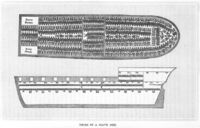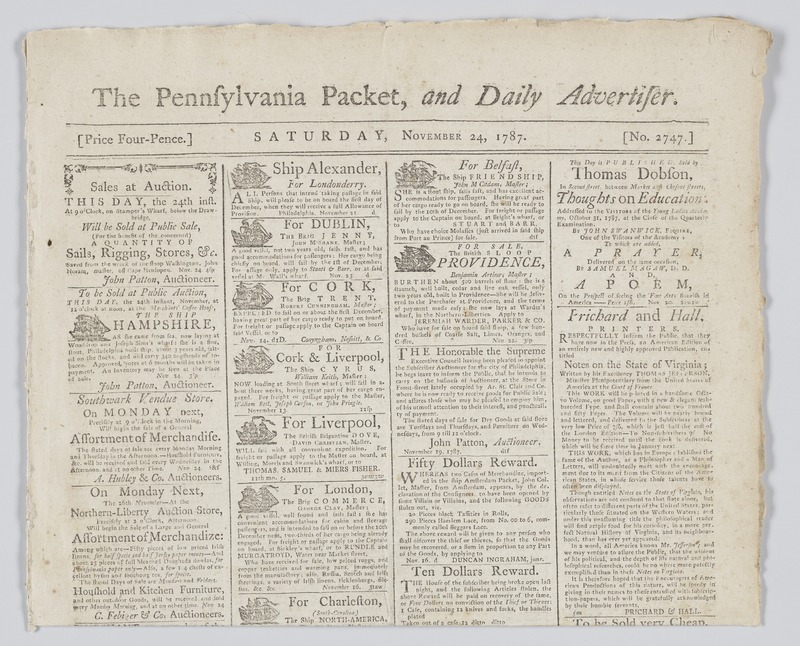African Slaves
Slave ships held up to 700 slaves in conditions so horrible that 12 percent would die before ever reaching land.
During the Trans-Atlantic Slave Trade, an estimated 12.5 million Africans were captured, shipped, and sold to the New World between 1525 and 1866. Only 10.7 million African slaves would survive during transportation, and of that number, an estimated 388,000 slaves made it to North America. Like the one depicted on the right, Cargo ships packed men, women, and children close to each other. The vessel had several layers that held slaves held up to 700 slaves. The living conditions were so horrible that 12 percent of all Africans died on the cargo ships, never touching land again.
Auctions destroyed families as they sold men, women, and children alongside livestock.
In the United States, African chattel slavery served as a replacement for Native American slaves. Whites considered them less prone to illness and death and a better investment. Furthermore, Africans did not know the language or the terrain and were less likely to escape, cutting down on cost. While the transportation of slaves from Africa became illegal in 1808, slavery in the South continued. Slave traders such as J.F. Moses placed ads that promoted his wares, “a likely lot of negros, about 40 in number.” Slave prices varied based on the supply and demand of their labor and the costs of the goods they were to labor for. Women were valuable because they could produce more slaves through their children, who labored and later became property to sell. Newspapers such as “The Pennsylvania Packet, and Daily Advertiser” announced private sales of slaves, such as the 29-year-old unidentified male, and a ten-dollar reward for a slave named Will. Often the paper reported the sale of men, women, and children at auctions, often alongside livestock and household goods. Auctions divided and destroyed families, and it would take years before African Americans could trace their roots. However, African Americans in advertising would continue to remind them of their history as slaves.


